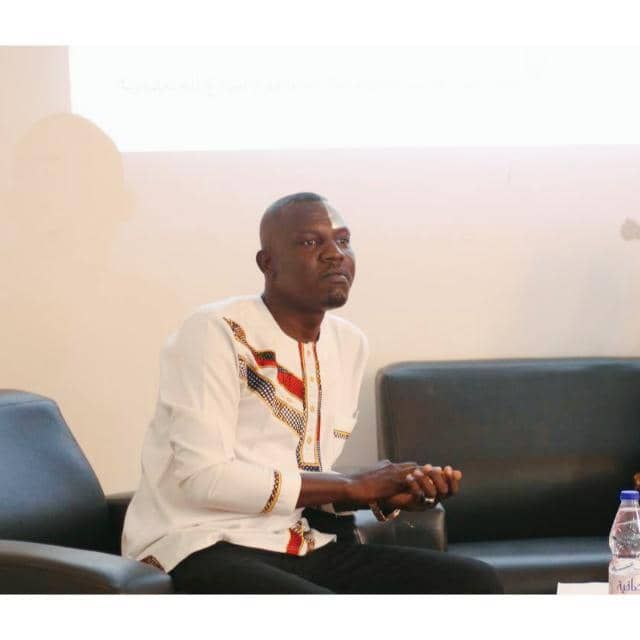Trigger Warning and Disclaimer: The following content includes personal and sensitive experiences. The views expressed are those of the author and do not necessarily reflect the positions of Andariya. We encourage you to engage with the piece in whatever way feels right for you. You can read our full editorial notice here.
Khartoum is geographically located in the center of Sudan. Yet, it has never been considered part of the “central region” or any of the other well-known administrative regions in the country. Instead, it has been treated as a separate entity with a unique status, belonging fully to no place despite its location. Notably, in the public imagination, the term “regions” was reserved for cities and areas outside Khartoum, and over time, it became laden with negative connotations such as backwardness or deficiency. Residents of Khartoum never identified themselves as “from the regions,” while people from other states were consistently labeled socially as “regional people” (abnāʾ al-aqālīm).
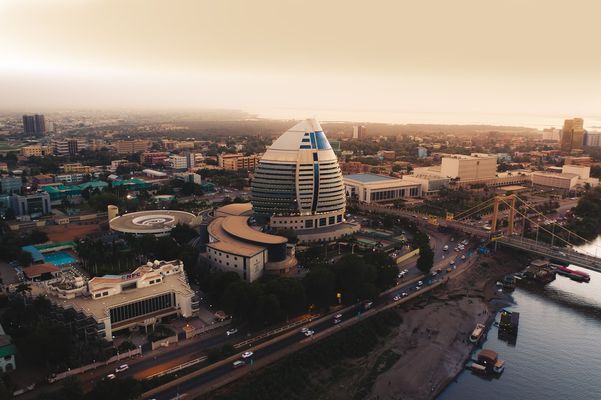
The scenery in Khartoum before the war. Source: Humbo
Dominant culture, media, education systems, and employment structures contributed to creating layered social representations and stereotypes based on this classification. Those coming from the regions were often associated with need, aspirations for upward mobility, or distinct accents, while Khartoum retained its image as the icon of urbanity and symbolic superiority.
This notion of “the region” in the collective social imagination prompts a question, in the same way as the reflections of Gilles Deleuze and Thomas Nail: what makes a region a region? Conversations with a small group of Khartoum-born residents reveal that a geographical space with fixed characteristics does not merely define a region; rather, it is constituted through the movement of people, their practices, and their perceptions, which endow it with a dynamic and evolving identity. This viewpoint advocates rethinking social maps as expressions of communal awareness rather than mere reflections of fixed geographic boundaries. From this perspective, it opens the door to redefining social spaces and decentering Khartoum's perceived supremacy, allowing it to be viewed as just another region with no intrinsic advantage over others.
This dynamic approach sheds light on how, for decades, Khartoum represented the "official Sudan" while the rest of the country remained in the shadows, marginalized, or considered solely as human reservoirs. Capital dominated power, culture, the economy, and political representation, giving the impression that it owned the country while everything else swirled around it.
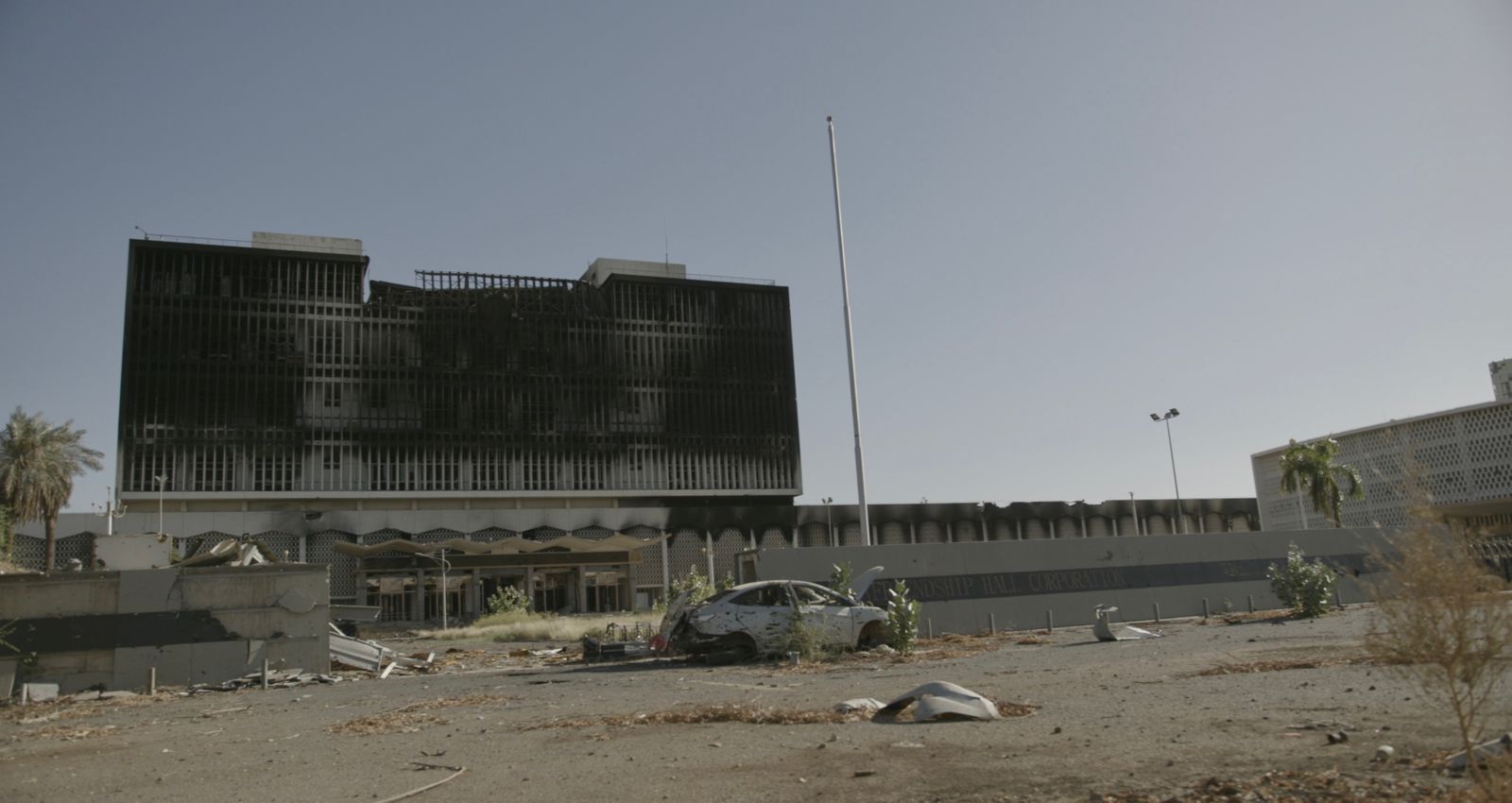
A picture of the Friendship Hall in Khartoum after it was burned and its facade destroyed during the April 2023 war. By Al-Samwal for Andariya.
As fighting continued in the capital, accompanied by the collapse of much of its infrastructure and the spread of scenes of death and destruction, a wave of writings emerged that focused not only on the city’s strategic dimensions, but also on its symbolic and historical significance. Azza Mustafa described Khartoum as “a city that holds a central place in the hearts and minds of most Sudanese,” emphasizing its role as the “epicenter of wealth and power” (CMI, 2023).
Similarly, Amira Othman portrays Khartoum as a city embodying Sudanese hope, reflecting the people’s aspirations and struggles (WEF, 2023). These writings, which examined Khartoum and the war’s impact on it, represent an unprecedented focus compared to the relative scarcity of writing about the devastating effects of the conflict on other cities like Al-Jazira or Nyala, highlighting Khartoum’s centrality in Sudanese collective memory.
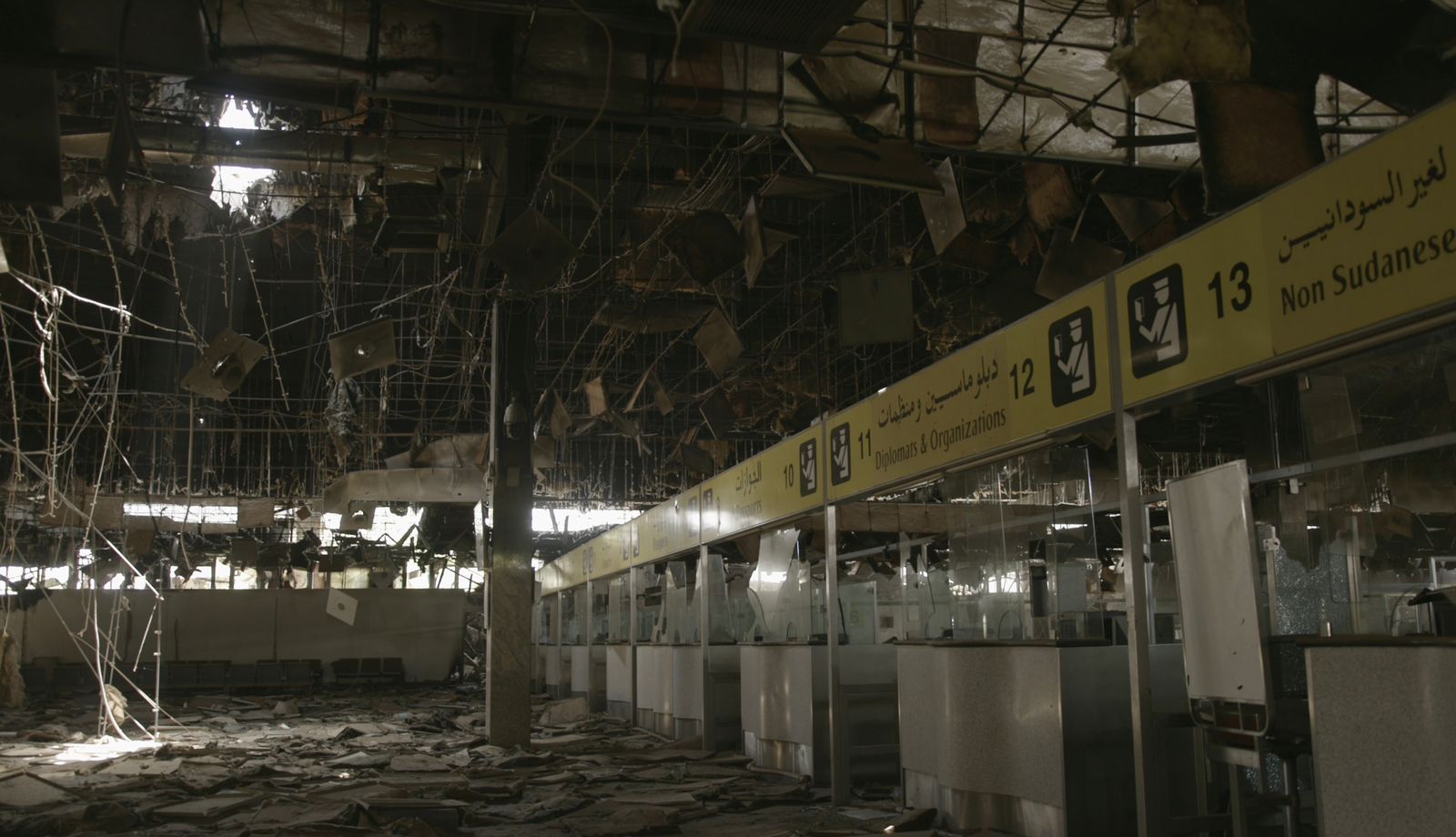
A photo showing the destruction inside Khartoum Airport (taken by Al-Samwal)
These reflections stand at a new juncture following the eruption of war on April 15, 2023, which overturned the balance of power. Within a short period, the city that had long served as the heart and symbolic center of the state fell. According to the International Organization for Migration (IOM) estimates, more than 7.7 million people have been internally displaced within Sudan, and an additional 4.1 million have fled abroad since April 2023, making this the largest displacement crisis in the world.
Hundreds of thousands were forced to abandon their homes; schools shut, streets turned into battlefields, markets became looting grounds, and homes were reduced to rubble. The capital collapsed while the peripheries rose in ways no one could have anticipated (The Guardian, 2025).
Large waves of displaced people moved to areas, towns, and villages that had long been considered “provincial.” Cities like Rabak, Sennar, El-Obeid, Damazin, Kassala, Port Sudan, Merowe, and even some villages in Darfur and the Nuba Mountains became safe havens for Khartoum’s fleeing residents. These movements have driven deep social transformations that the state has yet to comprehend fully or address.
Time reports that more than 600 “shelter centers” have been established across Sudan to provide food, shelter, medical care, and education, marking an unprecedented grassroots humanitarian mobilization. Yet mentioning these centers is not a celebration, for their existence reflects the painful reality of families and individuals being uprooted from their homes.
In a moving appearance on the Wakeep platform, the renowned comedian Abdelsalam Jaloud spoke with sorrow about how the meaning of Eid had been lost in the shelter where he now lives in Port Sudan. However, he emphasized the warmth of the city’s residents and how eastern communities provided displaced families with the means to celebrate despite their losses. Nevertheless, the role of these centers extends beyond the provision of aid; they are increasingly becoming spaces of interaction between Khartoum’s displaced populations and the residents of the regional cities they fled. This interaction is fostering demographic mixing, reshaping social relationships and cultural identities in these areas.
While it is important not to overlook the hardship and suffering endured by the displaced in these spaces, it could be said, without falling into naive optimism, that the interaction between “Khartoumers” and those considered “from the regions” is not limited to exchanging survival strategies and lifestyles. Rather, it actively contributes to building new social bonds that dismantle long-standing psychological and cultural barriers and stereotypes. In turn, it helps reimagine Sudan as a diverse and interconnected social fabric.
The peripheries, long viewed as developmental backwaters, began reclaiming a central role in organizing daily life. Traditional systems of administration, relief, and coexistence were reactivated, while grassroots initiatives emerged to accommodate the displaced. Small markets in cities such as Port Sudan and Kassala began to thrive with the shift in economic activity, and schools in the states filled up with children from the capital. Even political consciousness started to shift away from waiting for solutions from the center toward reconsidering local alternatives.
In this light, Sudan’s social map appears to be undergoing a gradual yet profound transformation. Khartoum is no longer the sole center of gravity; regional cities are increasingly functioning as genuine hubs of life, while local communities are stepping into the roles of an absent state. Perhaps for the first time since independence, many Sudanese are beginning to view the different cities not merely as places of refuge, but as spaces of vitality and possibility.
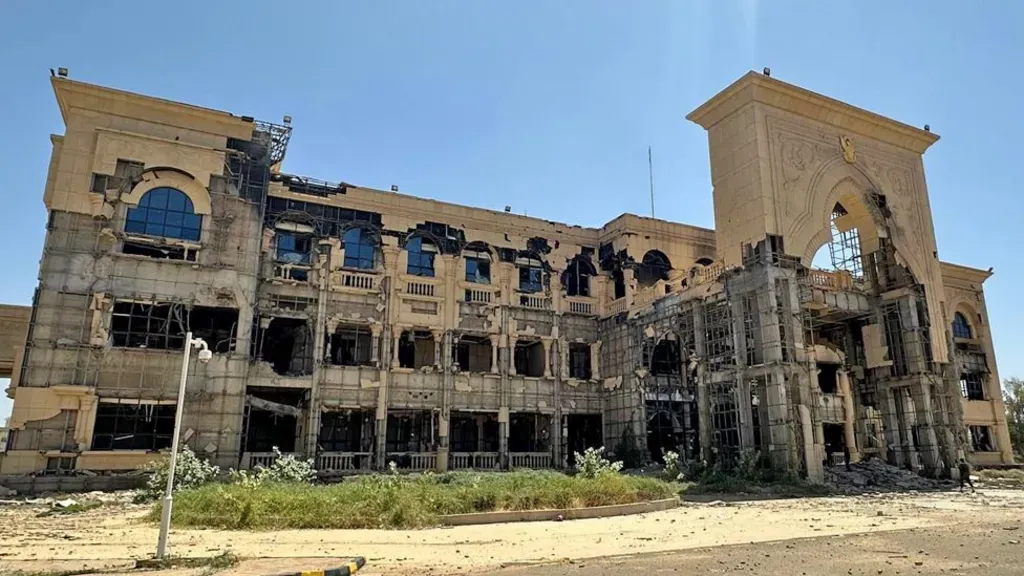
The Republican Palace after the fierce battles of the April 15 War. Source: BBC
This shift, however, is not without its challenges. The rise of the peripheries does not automatically mean successful decentralization; rather, it might reflect a moment of vacuum where local communities step up in the state’s absence. Thus, the experience is rich in opportunities but also fraught with risks. New conflicts over resources, power, and representation could emerge in the absence of a political project capable of absorbing these changes, particularly given the presence of multiple armed actors and the ongoing war.
Yet the most significant change lies not in geography or economics but in people’s consciousness and social imagination. The idea that Khartoum alone represents Sudan or serves as its exclusive center of decision-making has collapsed. This centrality is unraveling in the collective imagination, giving rise to more grounded and pluralistic conceptions of Sudan. Restoring the importance of localities, small communities, and horizontal solidarities has become a defining aim of these emerging visions.
Despite the conflict undermining Khartoum's symbolic and material significance, a gradual yet consistent return to the city is currently occurring. Families, merchants, and certain factions of the transitional administration are returning, motivated by economic necessity, emotional connection, and the lack of viable options in various regions. This return undermines the initial optimism that decentralization, emerging from disintegration, may ultimately address Sudan's enduring geographical inequities. Rather, it reveals the tenacity of centralism in the absence of a purposeful political initiative to distribute authority and significance throughout the nation.
The peripheries may have demonstrated their ability for survival and unity, yet without structural investment, their ascent risks being ephemeral. Khartoum, beleaguered yet resilient, persists in its influence not due to its ability to satisfy the needs of all Sudanese, but because the state has yet to conceive a vision of Sudan that extends beyond its capital. The message is unequivocal: decentralization established through conflict cannot persist without a deliberate restructuring of political existence.
Thus, the April 2023 war, despite its devastation, has exposed the fragility of Sudan’s centralist system that governed for decades. Painful as it is, it has opened a door to reimagining the nation as a space of multiple voices, centers, and lived experiences. To begin envisioning a different future, we must first recognize these transformations rather than deny them. This is the first step on the path. Understanding the regions not as mere echoes or shadows of the capital but as the beating heart of life is the starting point of this journey.
